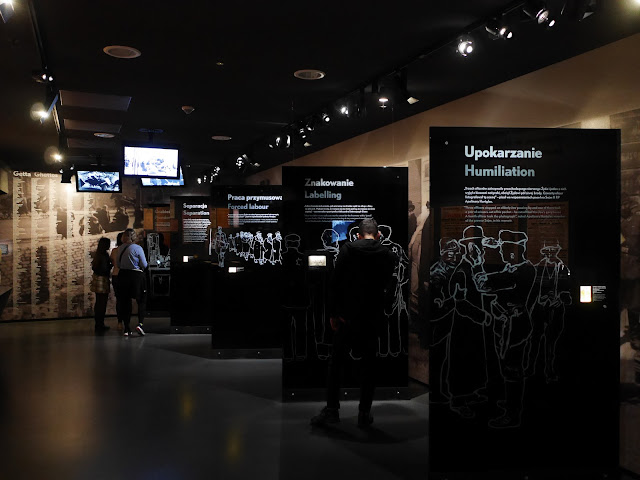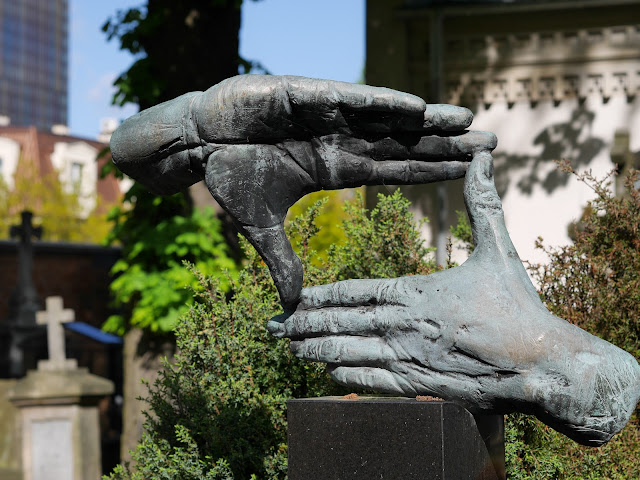The Polin Museum
Allied pilots 10,000 feet above the death camps could smell the decomposing corpses. It stands to reason that so could the residents of Auschwitz, Sobibor and Treblinka. The Poles knew what was going on. If I have any criticism of the admirably secular Polin Museum of the History of Polish Jews, it's that it doesn't delve very deeply into the themes of the nature of evil and the diffusion of responsibility.
But it is surely one of Europe's great museums, and it picked the right architect in Rainer Mahlamaki, a Finn. A curving, dynamic canyon splits the building in two, symbolizing a gap in the 1,000-year history of Jews here. The building is in Muranow, a pre-war district inhabited mainly by Jews that was turned by the Germans into a ghetto.
We know how this story plays out. Today in Poland, a nation of 37 million, fewer than 30,000 people of Jewish descent still think it's worth living here.
It wasn't always so, of course. At the end of the 16th century, 1% of the population was Jewish. A hundred and 50 years later, it was 10 times that.
By 1939, Poland had the world's second-greatest concentration of Jews, after New York City.
One of the museum's centerpiece exhibits is this stunning reconstruction of the lost 17th century wooden synagogue of Gwozdziec, in southern Poland.
There are also full-room stagings of home libraries, a religious school, a train station waiting room. The emergence of large factories, particularly in Lodz (pronounced "Wawzh" to my surprise) is meticulously documented. It was in these weaving mills that women learned of strikes and the power of labor contracts. Jewish children, too, could find jobs in the sweatshops. They worked more than 14 hours a day and were paid at one-third the wage of adults.
The December 1881 pogroms in Kiev and elsewhere in imperial Russia, while not directly in retaliation for the Jews siding with the Poles in the 1763 uprising, were merely a warmup for what was to come.
Clearly, something was up. After World War I the Jewish community in Poland launched into an intense debate about their future: What language should we speak? (Esperanto was developed by a Polish-Jewish opthalmolgist.) Who are we? Where should we live? How are we to realize our goals? Should our kids go to Jewish schools?
Political lines were drawn. Zionists advocated emigration to Palestine. The secular Bundists saw that as a type of escapism. Like the Bundists, Communist Jews were OK with remaining in Poland, as long as it involved a rejection of social classifications.
One of the museum's most powerful exhibits is "On the Jewish Street 1918-1939."
Kasia Jankowska, who seems like the perfect museum guide, gives a great (but lengthy) overview on YouTube.
I took a video of my own and am paraphrasing the chilling commentary piped through my headphones.
"Take a walk down this street and look at the shops and the facades of the tenements. Keep in mind that all of these signs of Jewish life in Poland are about to cease."
At first the occupiers wielded psychological violence. Bowing to soldiers was compulsory. There were restrictions on leaving one's home. Food rationing took effect.
Typhus and a black market in food followed.
Jews were forced to live in isolated quarters. They were imprisoned there, driven out of their own apartments, deprived of any sense of safety, pre-war living conditions, status, money and health. Life went on, of course. In one of the ghettoes, these doorbell instructions taunted the police.
Then ... deportations and death.
I have a copy editor's quibble. The name "Polin" is always referred to by the museum and people who write about it as "POLIN," in all-caps. But it is neither an acronym nor an initial-based abbreviation. Jews who traveled through here along the trade routes in medieval times were said to have heard the sound "polin" while camped out in the forests in what is now modern-day Poland. Presumably it was a bird call (I am nominating the European blackbird). "Polin" is Hebrew for "rest here," and, as the legend goes, it was heeded, because for hundreds of years from that time this was a "Paradisus ludaeorum," a friendly shelter for Jews.
Before everything went to shit, that is.
The 1944 Warsaw Ghetto Uprising Memorial is outside and is properly the subject of another museum.
On reflection, my opening paragraph may be too harsh. The Polin Museum wants to honor those who died by showing how they lived. It's a narrow focus, but I'm not here to fight.
The year 2023 feels a lot like the 1933. On the day I'm writing this, one of the biggest assholes on American politics Twitter posted a video of a subway car in Warsaw with the bland description "Subway in Poland," showing a sedate group of white Poles reading books or looking at their phones while going to work or wherever. It was a shrieking dog whistle in the days after the choking death of a disruptive black man on the New York City subway.
And out came the race hate. Last I checked it had upward of 6 million views.

















Comments
Post a Comment